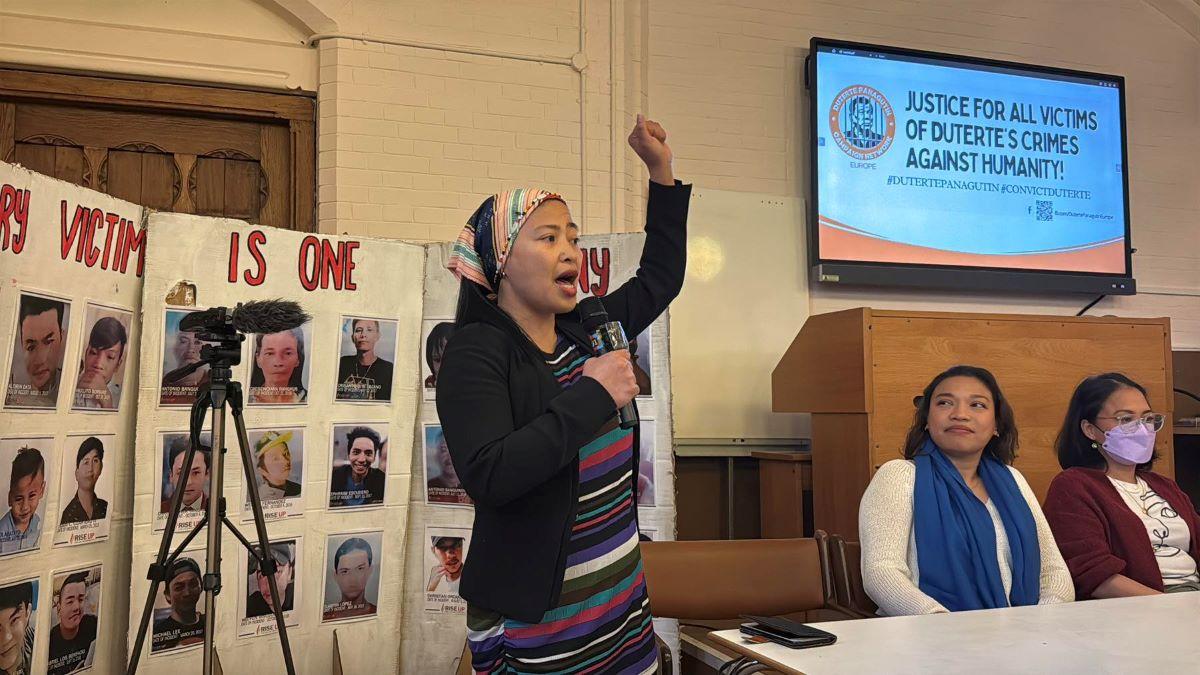The Midas Marquez touch
I've always found him accessible and amiable, even if we didn't always agree. His phone number is on my contacts list and he does respond to my various texts. A few minutes after a bomb went off at the bar examination salubong in 2010, I texted him about it and he called me, asking for details, because he hadn't heard about it. When I posted an open letter on Facebook, he responded in like manner. He was always ready to oblige with details about bar examination results and would always be accessible to the press on such things
It's difficult to ignore him, not only because the cameras love him but also because he would insist on speaking out. Different from his predecessor and the first spokesperson of the Court (Ishmael Khan), he would not only talk about rulings of the Court, he would also give short color commentaries -- often unsolicited. Perhaps in his mind he was trying to make otherwise obscure legal principles clearer to members of the Justice beat -- which would have been a great service; however, at some point, he crossed that line between being a source of news and information to being part of the news himself.
Thus there were times, in answering a question, he would give an insight into how members of the Court voted, only to be contradicted by the members of the Court themselves (it is rare to have an entire opinion of a Justice devoted to the spokersperson of the Court; he, alone, has earned that dubious distinction). There were times when he sounded like he was "winging it," making up the answers as he heard the questions. And as he continually inched across the line from being spokesperson to spin doctor, his statements stopped being statements of the Court and more and more the statements of one person, the head of the Court.
It did not help that he held another job that created an inherent conflict with his better-known persona as spokesperson, that of Court Administrator. As Court Administrator, he is duty-bound to oversee the various lower courts and is the conduit between these courts and the Supreme Court. As such, he is expected to be partisan, in favor of these courts, in relation to the Supreme Court, on whose behalf he was also expected to speak, and the other branches of government, from which would come such important matters as budgets. He could not be expected to be both partisan and independent at the same time. That he failed to see this line clearly showed
That, to me, was when the man, named after one whose touch turns everything golden, lost his luster.
Midas Marquez spoke for two Chief Justices. That, in itself, is a feat: for two heads of the Judicial Branch to repose so much confidence in one who is relatively young. This feat, however, also became his downfall. For, in so doing, he lost track of the reason why he needed to speak and for whom he was supposed to speak -- it was for the Supreme Court itself, composed not of one person but of 15 persons whose only intervention in Philippine society is through their collective decisions.
As members of the Court are expected to be independent, so too should one who speaks for the Court -- not loyal to one person (the Chief Justice) but fiercely loyal and passionately committed to one institution alone (the Supreme Court and the judiciary).
When he started speaking for the Court, it was for his former boss, Reynato Puno, for whom he served also as Chief of Staff. When Chief Justice Puno retired, his successor, the now-removed former Chief Justice Renato C. Corona retained him to speak for the Court, on top of his now new assignment as Court Administrator. It became evident early on that he was fiercely loyal not to the Court itself, as an institution, but to one person, the then Chief Justice.
He would be present physically on television talk shows where the embattled Chief Justice would be interviewed (something that is unprecedented for members of the Court who are expected to be reclusive, by reason of their job) on his midnight appointment as Chief Justice. He would continue to articulate the positions of the former Chief Justice and his family members. When the former Chief Justice was impeached and being tried, he would wage verbal war with members of the executive branch. His physical presence, during the times that the former Chief Justice would appear before the Senate, would be noticeable but inexplicable -- after all, the former Chief Justice had retained independent counsel and independent spokespersons. His presence spoke volumes about where his loyalties lay.
When the smoke settled and the former Chief Justice was removed, it became a question of "when," not "if," he would be relieved as spokesperson of the Court. And it came as a surprise to very few that one of the first acts of the Court, in its special session after the removal of the former Chief Justice, was to confirm that Atty. Marquez was no longer speaking "for the Court," as the post was coterminous with the former Chief Justice. That, by itself, was telling -- that the Court itself would acknowledge that its own spokesperson was not speaking for the Court but for one man alone because of the coterminous nature of the relationship.
Midas remains as Court Administrator; his erstwhile deputy, Atty. Gleo Guerra (his opposite number in many ways than one as Atty. G prefers to be unobtrusive, speaking only when necessary, taking a page from Atty. Khan's experience) has taken over as Public Information Office (PIO) head and spokesperson in an acting capacity. Where Midas was combative, Gleo is the opposite.
In the same way that Midas could not be ignored when he was speaking for two Chief Justices, he will be missed -- even his many opponents will concede this. Without him, there is no lightning rod ready to accept the criticisms thrown the Court's way and equally ready to dish out his own criticism. Whatever his shortcomings may be when he was speaking for Chief Justices, no one can fault him for his passion -- though one may disagree on how misplaced the passion may have been -- in defending his principals.
Midas's experience, however, should give the Court pause to consider some administrative guidelines for the PIO head and the spokesperson of the Court.
The spokesperson of the Court is, to the public, the Court itself. He is expected to be the image, persona and voice of the Court. How much or how little he reveals to the public should be a matter for the Court to decide, not for the spokesperson.
Clear standards for the performance of duty should be set forth; a clear understanding of what these duties and functions are, in relation to the Court, members of the Court, and to the other branches of government, should be arrived at; and more importantly, the coterminous nature of the relationship should be reconsidered. A spokesperson for the Court should not be coterminous with the Chief Justice but should perhaps be term-bound; a spokesperson expected to speak for the Court but is coterminous with the Chief Justice is placed in an inherent conflict of interest position, from the very start.
The impeachment process that led to the removal of Attorney Corona as Chief Justice of the Philippines should also provide some lessons on how this voice, image and public persona of the Court should act. For an institution whose main strength is its independence and whose main weapon is reclusiveness, the balancing of interests, in this regard, will be difficult but, considering our recent experience with Attorney Corona, it is necessary.
I wish Midas well and, though this may not be welcome news to his detractors and opponents, I am sure he will be back in the public eye in some form or manner. Hopefully, this experience may not be lost on him. After all, the country does need people who can invest so much passion in something that they believe in -- and, though one may disagree with how he invested his passion, Midas has shown just what one can do with passion alone. - GMA News

Ashley Ortega at AC Bonifacio, lumabas sa unang eviction night ng 'Pinoy Big Brother: Celebrity Collab Edition'

3, patay nang bumangga ang kanilang kotse sa kasalubong na truck sa Pampanga

Anti-Duterte groups in Europe launch alliance on ex-president’s 80th birthday





